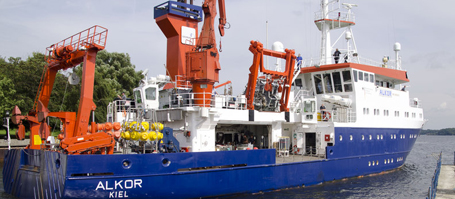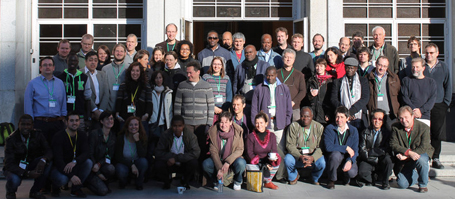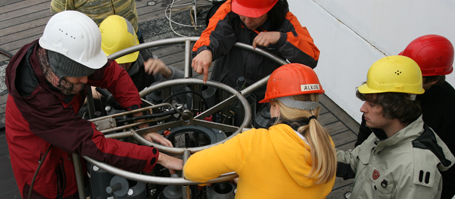It sounds like a paradox: Vital nutrients are plentiful in the Baltic Sea. Nevertheless, large parts of this northern European marginal sea are temporarily - or in some cases, like the deep basins - almost permanently without oxygen and thus become a hostile environment for many marine organisms. The apparent contradiction between an abundance of food and an absence of higher organisms in large areas can be dissolved if you take a closer look at the various life cycles. The frequently excessive supply of nutrients ensures, among other things, an almost unrestrained growth of micro-organisms, such as algae. Once they die, bacteria start to break down this biomass, and they consume so much oxygen in the process that in some places none remains available for fish, crabs, and clams. At the same time a large part of the partially or non-degraded biomass sinks to the seabed where it forms a huge reservoir of nutrients.
A large portion of the available nutrients in the Baltic Sea is still contributed by river inflow, originating from agriculture and sewage. Another portion, however, exists in the organic substance deposited as sediment. Internal processes return these nutrients into the sea water. So far there has been virtually no quantification of the sediment contribution to the eutrophication of the Baltic Sea. Last week the research vessel ALKOR of GEOMAR Helmholtz Centre for Ocean Research Kiel has launched a four-week expedition to the eastern Gotland Basin to examine these processes in more detail. "This is also one of the longest research cruises the ALKOR has been made so far," says chief scientist Dr. Olaf Pfannkuche from GEOMAR.
The journey, officially known as AL422, takes place during a season where part of the summer blue-green algae bloom is already dead and deposited on the sea floor. In the study area between the Swedish island of Gotland and the Latvian coast, the scientists will carry out their biogeochemical, geochemical and microbiological experiments directly on the seabed. "We will work in water depths of 50 to 200 meters and thus cover both areas, where oxygen is still present, and in areas with anoxic conditions," the chief scientist explains. In particular, the researchers are interested in the transitional habitats with very low, but variable oxygen supply.
To perform the various measurements on the sea floor, so-called BIGO-Landers, autonomous biogeochemical ocean floor observatories, will be used. As part of the Helmholtz Alliance ROBEX (Robotic Exploration of Extreme Environments), some newly developed instruments will also be used and tested. "These include a so-called ammonium analyzer that can perform analyses directly on the sea floor. Previously we had to bring water samples to the labs on land", explains Dr. Pfannkuche, who is also director of the Technology and Logistics Centre at GEOMAR.
The current expedition is a follow-up and extension on the first measurements in the Gotland Basin which were performed during ALKOR’s 355th expedition in June 2010. "At that time, we found indications that the sediments located at the boundary of oxygen-containing water layers play a previously unknown significant role in the recycling of nutrients from the ocean floor into the water," explains Dr. Pfannkuche. "This current expedition aims at an accurate description and quantification of the process." Results of the research cruise will also contribute to the Collaborative Research Center 754 "Climate - Biogeochemistry Interactions in the Tropical Ocean" that deals with oxygen-devoid environments in the open tropical ocean.
High-resolution photos:
Cast off! Research vessel ALKOR left the Kiel Fjord last week. Photo: J. Steffen, GEOMAR
Chief scientist Dr. Olaf Pfannkuche and his team will cruise to the eastern Gotland Basin for four weeks. Photo: J. Steffen, GEOMAR
A BIGO-Lander is recovered from a water depth of 122m. Photo: O. Pfannkuche, GEOMAR
The working area of cruise AL422. Graphic: GEOMAR
Links:
www.geomar.de GEOMAR Helmholtz Centre for Ocean Research Kiel
www.sfb754.de The Collaborative Research Centre 754 “Climate Biogeochemistry Interactions in the Tropical Ocean”
www.robex-allianz.de The Helmholtz Alliance ROBEX (Robotic Exploration of Extreme Environments)
Contact:
Dr. Olaf Pfannkuche (GEOMAR, RD2 – Marine Geosystems),
opfannkuche@geomar.de
Jan Steffen (GEOMAR, Communication & Media), Phone: (+49) 0431 600-2811
jsteffen@geomar.de
…



